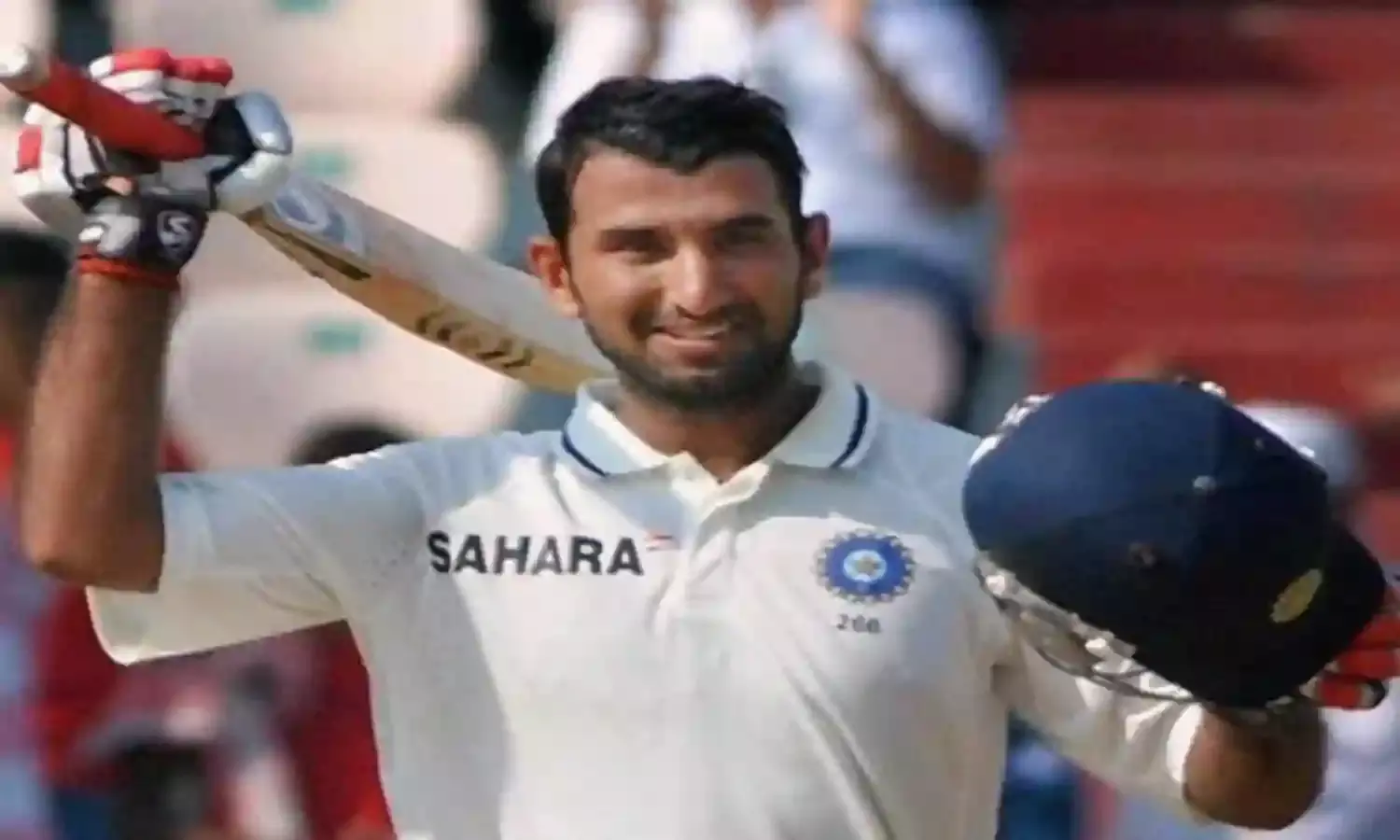Why There’s Not Much to Say Against Cheteshwar Pujara’s Exclusion from Team
Immaterial eitherways
‘Rahul is in at No.3, Pujara sits out.’
The news came as a bombshell when the Indian skipper Virat Kohli announced India’s playing XI at the toss. In doing so, he wanted to make a statement that Pujara has been dropped for Rahul and not for anyone else. So, he tried to suggest that Shikhar Dhawan, who scored ducks in both innings of their practice match against Essex, is an automatic selection.
Going by the numbers in Tests and recent form, Rahul’s inclusion ahead of Pujara is justified. But one could hardly figure out why Dhawan would get a nod ahead of Pujara when the batting order could have been shuffled with Rahul opening alongside Murali Vijay in place of Dhawan.
Both Dhawan and Pujara have poor overseas Test numbers to their names. Outside the sub-continent, the southpaw averages 28.84 while Pujara has nothing better to show averaging 27.31. So, there is hardly anything to judge with regards to their overseas record. They were also equally good during India’s fabulous run in 2017 in Asian conditions. While Pujara piled on 1140 runs in 11 matches at 67.05, Dhawan wasn’t far behind with 550 runs in 5 matches at 68.75.
Moreover, when Dhawan wasn’t given any more chances after his twin failure at Cape Town against South Africa this year, Pujara couldn’t go on to prove a point either. He ended up with exactly 100 runs in all the 6 outings at a meagre 16.67. So, there is hardly anything that would separate the two and speak for one over the other, as far as format specialization in terms of statistics is concerned.
It’s true that there’s not much to defend Pujara’s exclusion. But it is also true that there’s not much to speak for his inclusion as well.
Firstly, a poor county stint where he scored a paltry 172 runs in 12 outings at just 14.33 suggested that he had a lot to work on, in order to be successful in these conditions. 12 outings is a lot of chances and a player of his caliber had to make something out of that, which he didn’t. And he followed that up with an insignificant 35-run innings in the one-off Test against Afghanistan in which Dhawan went on to score a century. So, Dhawan clearly stamped his authority in that match.
Now leaving the statistical aspect aside, let’s talk about the technical aspect. The southpaw from Delhi is not amongst the most technically sound batsmen in the world. While Pujara is considered one amongst the rare breed of classical players in this era, there are quite some chinks in his batting armor as well. His weakness against incoming deliveries is not something unknown. The huge gap that he leaves between bat and pad often leads to his downfall. Moreover, he is quite vulnerable to out-swing as well. He has a natural technique of bringing his bat down from an angle pointing towards third slip. So, that’s one of the main reasons he is often dismissed caught behind as well. These reasons do call for a real fine-tuning of his technique.
So, Pujara doesn't give India any advantage over Dhawan from the technical aspect as well.
Now that the statistical and technical aspects have been analyzed, the decision behind the selection and exclusion of the two respective individuals has to be understood from the assumed impact it can have on a certain match. If Dhawan performs well, he would go on to score big in no time and that would have a huge impact on the outcome of a match. Batsmen who can score quick runs are invaluable in a Test match and are often underestimated. Take for instance a certain Virender Sehwag. Think about the impact he has always had on Test matches. Imagine the kind of player India would have in Dhawan if he goes on to become anyone near to Sehwag’s level.
Pujara, on the other hand, will always take his time to score runs, no matter how big he scores. If Dhawan can score the same amount of runs in much lesser time, imagine the impact it will have on the match. It will completely dismantle the tactics of the bowling side. So, the decision was taken considering whose success will have a more positive impact on the match result than considering the impact of their failures.
Even former Indian batsman VVS Laxman has suggested that Dhawan should be backed as long as possible as he has shown superb form in recent times and is probably in the best phase of his career.
"India must stick with Shikhar Dhawan for the first Test. He looked in very good touch in the limited-overs games, and made a hundred in the first session of the game in his last Test appearance, against Afghanistan. He must be encouraged to go out and play freely, without the fear of failure weighing on his mind, because that's when he is at his most dangerous. Shikhar can take the game away from the opposition very early, and if he can stamp his authority on James Anderson and Stuart Broad, it will neutralise England's biggest threats," Laxman wrote in his Times of India column.
Clearly, Laxman’s thoughts make sense. And a couple of ducks in practice match would have hardly put a dent in the confidence that he built in the limited overs series. And for a captain like Kohli who stresses on the importance of positive mindset and intent, picking Dhawan over someone like Pujara—one who isn’t in the best frame of minds and doesn’t have the intent Kohli looks for—is a no-brainer.
So, while it looks like the decision to drop Pujara is harsh and unjust, there's actually not much to speak against it as well.





